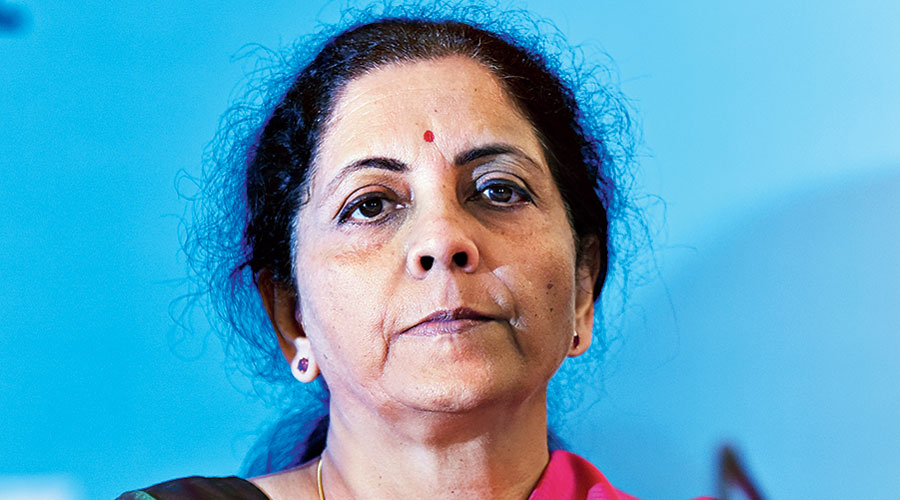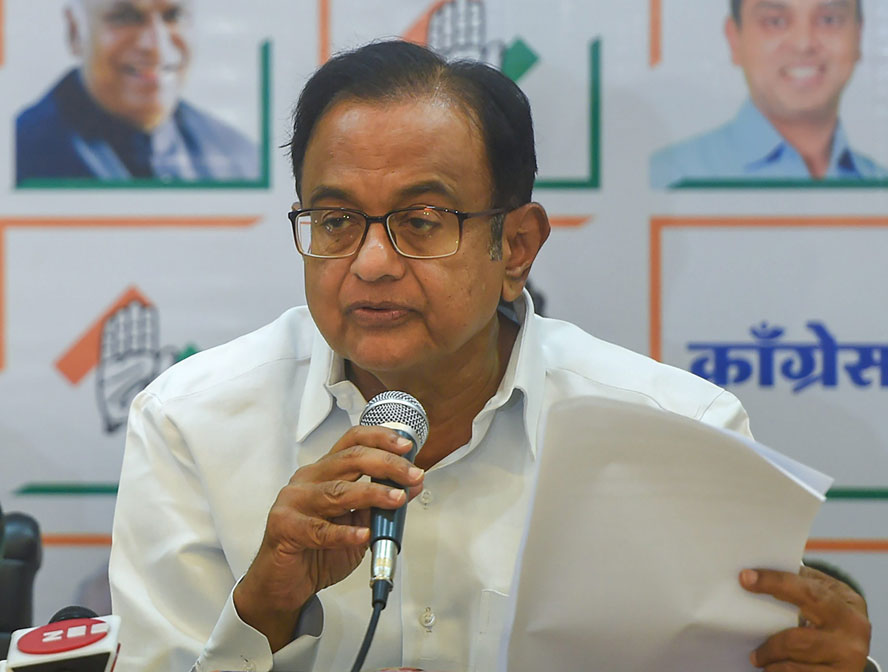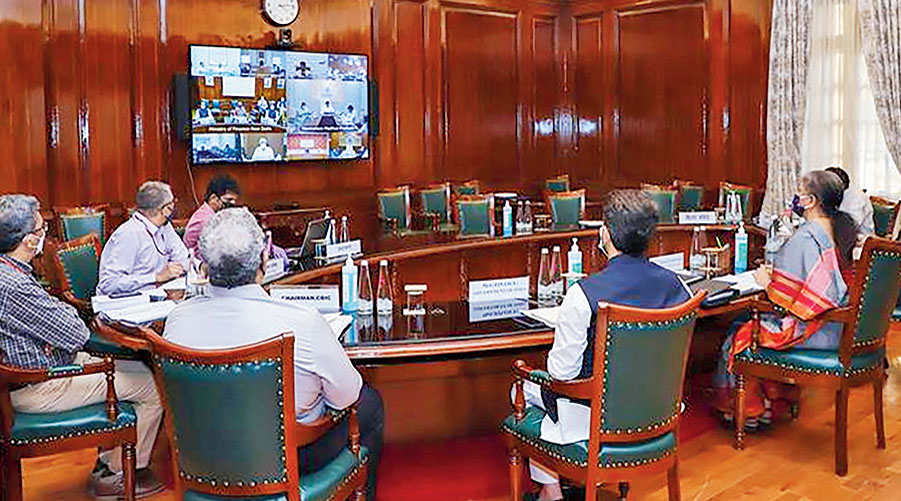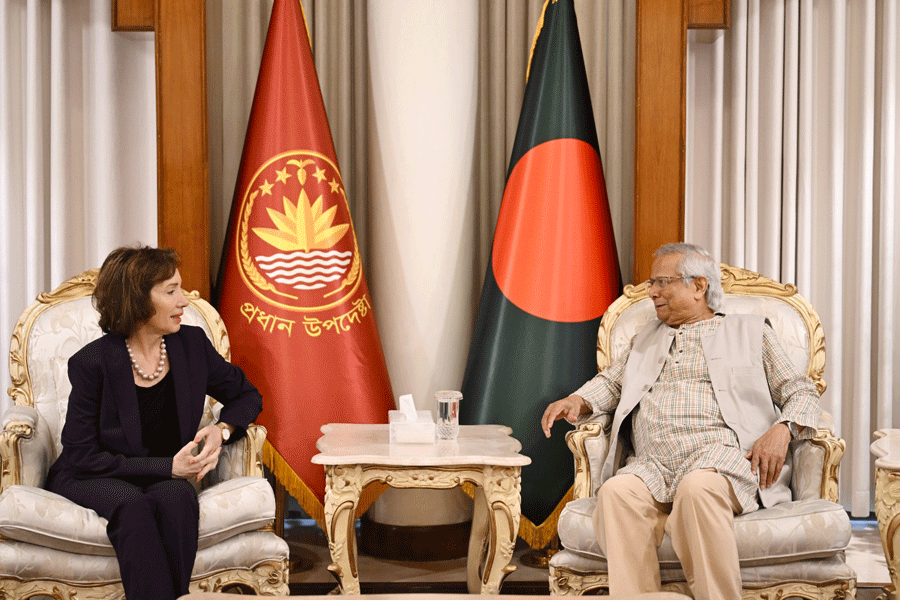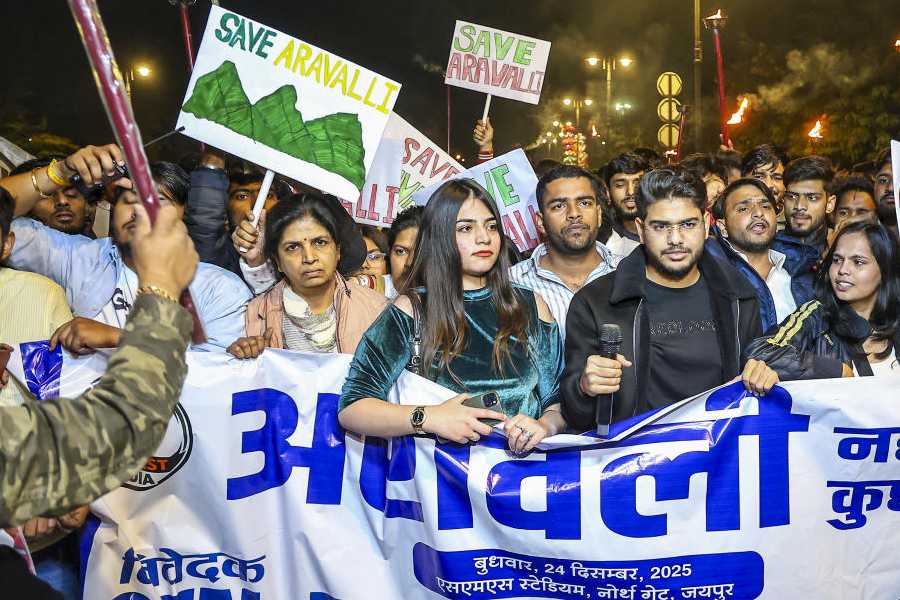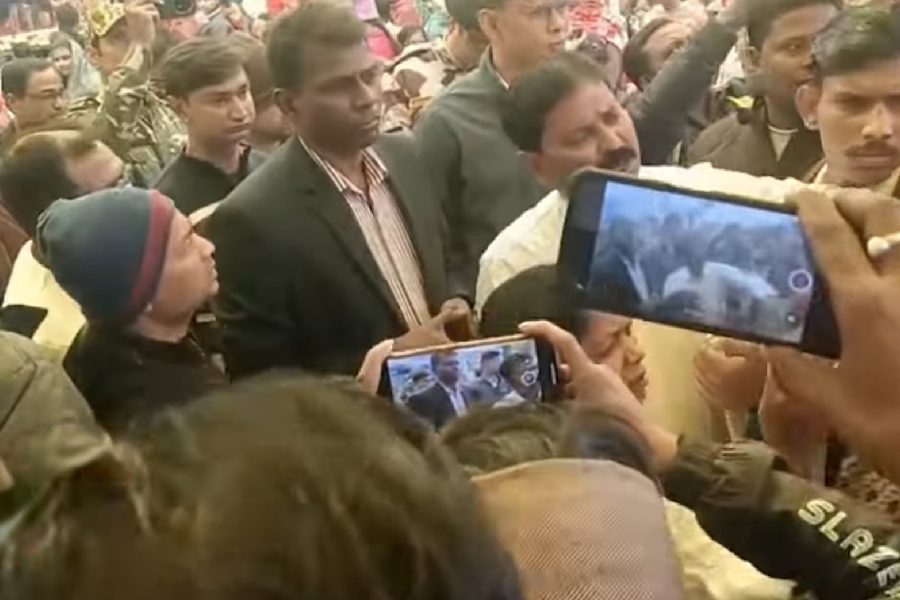Union finance minister Nirmala Sitharaman has had to eat crow after all.
After adopting a tough, take-it-or-lump-it stand in the face of stiff opposition from at least 10 states to the borrowing options that were placed before them to recover their legitimate GST dues, the Narendra Modi government has backed down and decided to borrow Rs 1.10 lakh crore from a special window before passing it on to the states.
The sharp U-turn after more than six weeks of drama over the contentious issue that had riven the GST Council came just a few hours after Kerala finance minister Thomas Isaac said the Opposition-ruled states were planning to move the Supreme Court against the Centre’s inflexible stand and its refusal to hammer out a consensus.
The craven submission came in a late-evening announcement: “Under the special window, the estimated shortfall of Rs 1.1 lakh crore (assuming all states join) will be borrowed by the Government of India in appropriate tranches…. The borrowed amount will be passed on to the states as a back-to-back loan in lieu of GST compensation cess releases.”
Late at night, the Centre modified the loan issuance calendar from October 19 to March 31 next year to include the Rs 1.1 lakh crore on behalf of the states.
The Centre’s gross borrowings during this period will swell to Rs 4.88 lakh crore, which will include the loans to cover the shortfall in GST compensation.
The government intends to raise three and five-year loans of Rs 55,000 crore to meet its obligation to the states.
The Modi government tried to play down its acute embarrassment by trying to suggest that the move had been dictated by a desire to avoid a situation where the states might have to borrow from the Reserve Bank of India’s special loan window at differential rates of interest based on their creditworthiness — suddenly waking to a problem it had not apparently foreseen.
“This will not have any impact on the fiscal deficit of the Government of India. The amounts will be reflected as the capital receipts of the state governments and as part of financing of its respective fiscal deficits. This will avoid differential rates of interest that individual states may be charged for their respective state development loans (SDLs) and will be an administratively easier arrangement,” the government added.
The 10 Opposition -ruled states had all along insisted that the Centre should borrow the amount and pass it on to the states in line with a promise that the late Arun Jaitley -- Sitharaman's predecessor -- had unequivocally promised when persuading the states to implement the GST regime that aimed to transform India’s $2 trillion economy and 1.3 billion consumers into a unified common market from July 2017.
At the end of a stormy five-and-a-half-hour meeting on August 27, the Centre had left the states with two disagreeable options: either borrow a sum of Rs 97,000 crore from the RBI’s special window to meet a small part of the expected Rs 3 lakh crore shortfall in GST collections this year, or raise the entire uncovered sum of Rs 2.35 lakh crore in the form of debt.
The borrowing Option 1 was raised to Rs 1.1 lakh crore at a meeting earlier this month but the Centre steadfastly refused to borrow the sum and pass it on to the states.
Besides Kerala, the states that had opposed both borrowing options included Bengal, Punjab and Chhattisgarh.
Congress leader and former finance minister P. Chidambaram tweeted: “If the Centre has decided to borrow the Rs 1.1 lakh crore and extend it to the states as back-to-back loans, I welcome the change in its position. I thank all the economists, academics and newspaper editors who had supported our position.”
Bengal finance minister Amit Mitra declined to comment on the development until he had seen the fine print.
However, a state government official said: “They (the Centre) appear to have come halfway. The note indicates the loan will be serviced from the cess and the states will have to service neither the principal nor the interest. That is why it will sit as a capital receipt on the balance sheet of the states.”
Earlier in the day, Isaac had tweeted: “Some of the States are likely to approach the SC against (the) discriminatory and illegal action of the Centre regarding GST Compensation. Kerala CM to chair a meeting of law, tax and finance departments and advocate-general to take final decision on Kerala’s stance tomorrow afternoon.”
Sophistry
Finance ministry officials resorted to sophistry to suggest that the Centre had not buckled under pressure.
“There is no change in stance.... The special window mentioned in the option is via the RBI and the loan is given to the Centre in the name of the state,” they said.
Under the borrowing Option 1, the Centre “will endeavour to keep the cost at or close to the yield on the government securities”.
If the cost is higher, the Centre will bear the margin between the G-Secs yield and the average of State Development Loan yields up to 0.5 per cent through a subsidy.
“It may also be clarified that the general government (states + Centre) borrowings will not increase by this step. The states that get the benefit from the special window are likely to borrow a considerably lesser amount from the additional borrowing facility of 2 per cent of their gross state domestic product (from 3 to 5 per cent) under the Aatma Nirbhar Package,” the government said in its note.
The Aatma Nirbhar package was unveiled in May as part of a Rs 20 lakh crore stimulus package that left many economists disappointed with the scale of the fiscal response to the Covid crisis.
Jayanta Roy, senior vice-president and group head, corporate sector ratings, ICRA, said: “This step will reduce the supply of state bonds in the second half of this fiscal from the level that was earlier being anticipated. Moreover, the cost of such borrowing would go down. In conjunction with the plan to conduct open market operations (OMOs) in SDLs that has been announced by the RBI, such measures should help ease SDL spreads.”
Officials said: “The repayment mechanism will remain the same, as presented before the GST Council. The repayment will be done by the collections under the compensation kitty post-June 2022. The first charge will be used to pay interest; the second charge will be divided between paying the principal amount and the remaining compensation dues of the states.”

